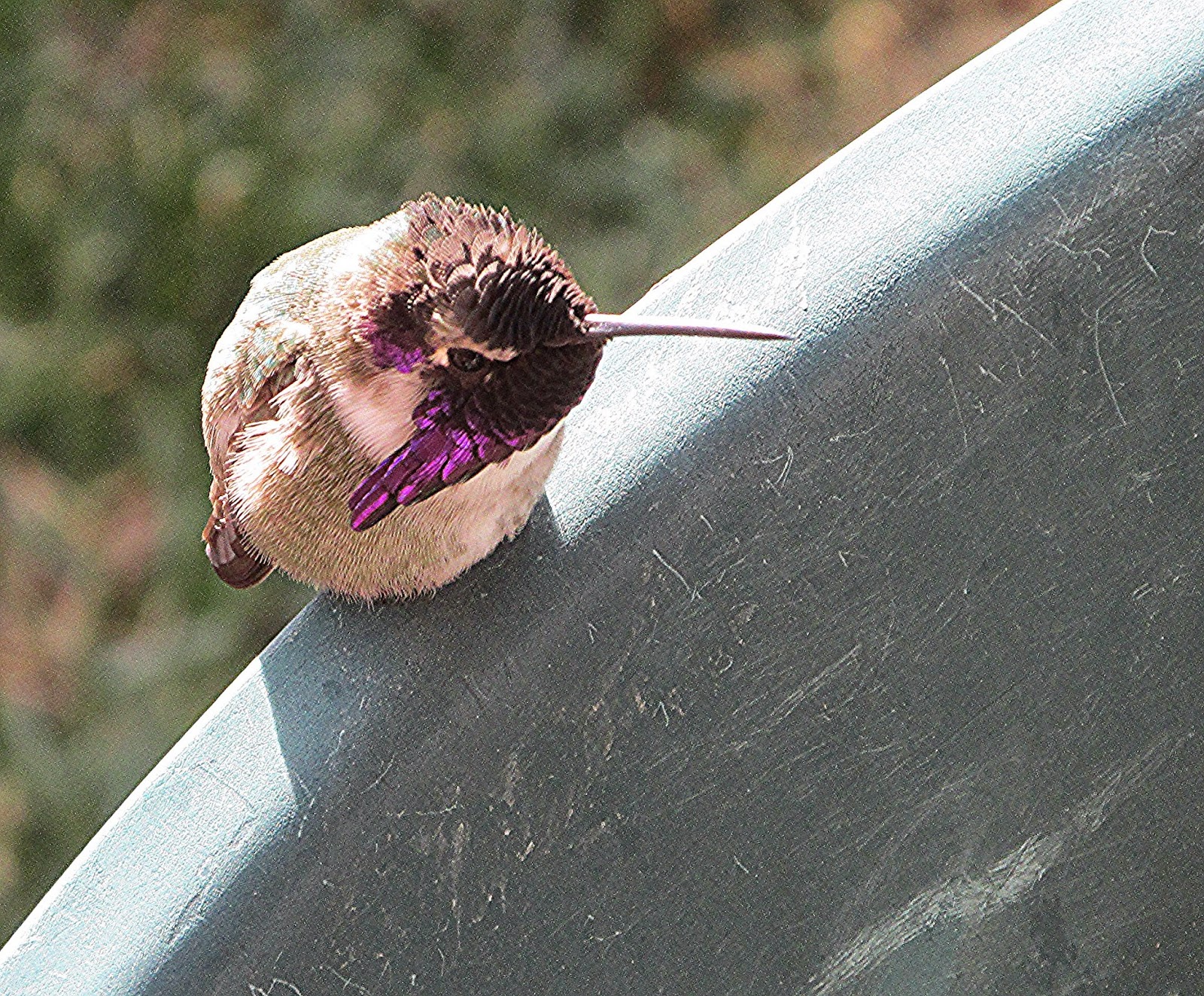Let’s
be honest. I thought this was my place, but no. I my own the house, but C Hummer
owns the yard. When I sit outside on a pleasant afternoon he buzzes by me, sits
in the bush next to me and scolds. When I take the feeder in to refill, he lets
me know that is his feeder by zipping around me and scolding. The last time I
sat outside, when we had a record breaking high of 75 on December 22, C Hummer
sat right over my head on the bill of the hummingbird wind chime and whistled,
letting me know that was his territory.
 |
| Looking down on C Hummer, I'm only a few feet away! |
That
same day I needed to fill the favorite sweet-water feeder. It needs filling
everyday because it not only attracts hummers, but numerous house finches and Verdins.
C Hummer was sitting on the back of the
chair on the patio. I had to go right past him to get to the feeder. I walked
slowly wondering at what point he would fly off. I was within a foot of the
chair when off he went.
 |
| Taken without zoom from about five feet away. |
On the
way back with the filled feeder I again had to walk right past him. This time I
stopped before he flew off and held the feeder in front of him. He quickly came
to it, sat on a perch, drank, moved to another perch, and drank some more. All this while, I was holding the feeder in my
hand. When he flew off I was able to hang it where it belonged.
The
most amazing, and worrying, thing though is his attitude towards my dogs. Maybe
he sees them as an extension of me. Because the dogs don’t move slowly, C
Hummer flies off when then go out on the patio. This one day, I let one dog
out, he ran across the patio and out into the yard. The hummer didn’t move.
Okay, the dog didn’t go towards him so I supposed that’s why he stayed perched
on the back of the chair. Then the dog came back to the patio. This time my dog
spotted the hummer and headed towards him. I watched, ready to yell ‘NO! ‘if he
got too close. The dog walked over to the chair and put his nose up to sniff
the bird. I was relieved when C Hummer flew off. Then alarmed, when instead of
leaving the area, he came back. He hovered in front of my dog and touched noses
with him. Of course I didn’t have my camera with me. And I hope, for the sake
of my nerves, that I don’t see that again!
 |
| Taken without zoom from about a foot from the chair. |
I
normally don’t name wild animals since it is emotionally safer not to. C Hummer
is different because he has found his way into a series of children’s picture books
I am writing, not about birds, but about cats. C Hummer is such a character he
just has to become one of the main characters. So C Hummer he has become. I
wonder what he’ll do next in my – pardon me, his – yard in Las Vegas NV.













